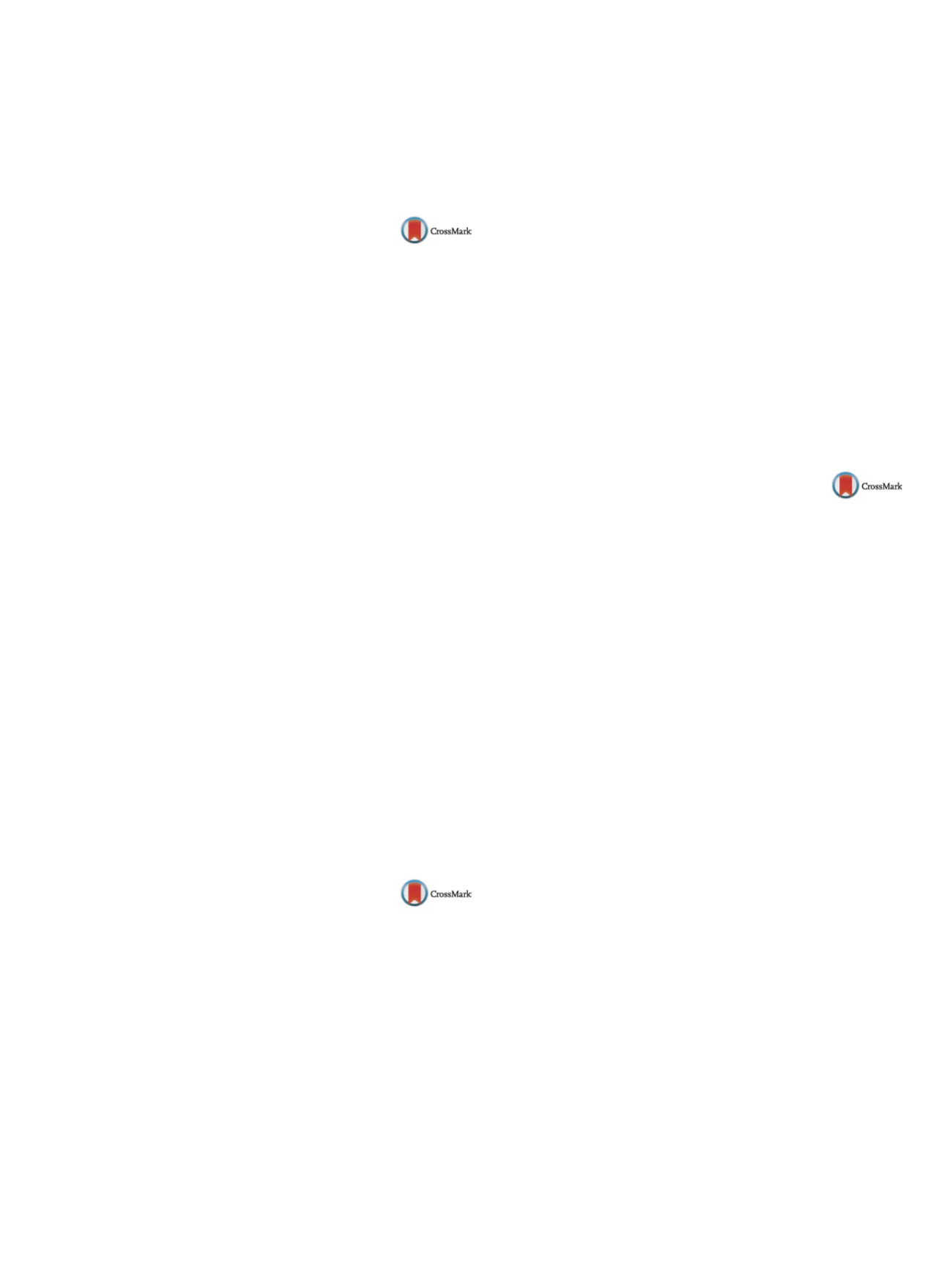

25th European Congress of Psychiatry / European Psychiatry 41S (2017) S106–S169
S151
were some of the factors that could be of importance in reducing
involuntary admissions.
Disclosure of interest
The authors have not supplied their decla-
ration of competing interest.
http://dx.doi.org/10.1016/j.eurpsy.2017.01.2004EW0136
Comparison of self-reported to
observational agitation scales
L. Zun
1 ,∗
, L . Downey
21
Mount Sinai Hospital, Emergency Medicine, Chicago, USA
2
Roosevelt University, Health Policy, Chicago, USA
∗
Corresponding author.
Background
Increasingly, psychiatric patients are presenting to
the emergency department (ED) with agitation. ED staff rarely, if
ever, use scale to assess agitation or use any self-assessment tools
to determine a patient’s level of agitation.
Objectives
To evaluate the relationship between a patient’s self-
reported level of agitation and other validated agitation assessment
tools.
Methods
This is a prospective study using a convenience sam-
ple of patients presenting to the ED with a psychiatric complaint.
This study was conducted in an urban, inner-city trauma level
1 center with 55,000 ED visits a year. After obtaining consent,
a research fellow administered observational tools, PANSS-EC
and ACES and BAM and Likert scale self assessment tools on
arrival to the ED. SPSS version 24 was used. The study was IRB
approved.
Results
A total of 139 patients were enrolled. The most com-
mon ED diagnoses were depression, schizophrenia, or bipolar.
Majority of patients were African-American (59%), falling in the
25–44 year old age range (56%) 52% male. Self-reported agita-
tion was rated as moderate to high in 72.4% of these patients
on the Likert scale and 76.3% on the BAM. There was a signifi-
cant correlation between the self-reported score versus the BAM
(
F
= 11.2,
P
= 0.00). However, the self-reported scores were signif-
icantly different from the scores assessed by observational tools
(
P
< 0.05).
Conclusions
ED providers should assess a patient’s self-reported
level of agitation because a patient could be feeling markedly agi-
tated without expressing outward signs detected by observational
tools.
Disclosure of interest
The authors have not supplied their decla-
ration of competing interest.
http://dx.doi.org/10.1016/j.eurpsy.2017.01.2005EW0137
Intrafamilial homicide: A descriptive
study of fratricide in Quebec
D. Bourget
1 ,∗
, P. Gagné
2, A. Labelle
11
The Royal Ottawa Mental Health Centre, Psychiatry, Ottawa,
Canada
2
University of Sherbrooke, Psychiatry, Sherbrooke, Canada
∗
Corresponding author.
Introduction
Fratricide comprises approximately 2% of all intra-
familial homicides. Analyses of national data on fratricide showthat
adult males are considerably more likely to be offenders and vic-
tims or fratricide. A previous study suggested there were two main
categories of fratricide: related to alcohol intoxication or associated
with mental disorder.
Objectives
Present and discuss the results of an original study
comprising 28 cases of fratricide.
Aims
To provide up-to-date scientific knowledge on fratricide.
Method
This is a retrospective study of 28 cases of fratricides,
extracted from a sample of over 1000 consecutive cases of
coroners’ files of victims of domestic homicide occurring between
1990–2015.
Results
Two victims out of three were males, most of adult age.
There were only 2 female offenders in the whole sample. A major-
ity of victims were Caucasians while 21% were aboriginals. Most
victims were stabbed to death. The murders usually occurred at
the residence of the victim. In total, 39% of offenders suffered from
a major mental illness; 21% were acutely intoxicated at the time.
In victims, 29% were under the influence of alcohol and 18% of
offenders were free from mental problems.
Conclusion
Our data indicates that fratricides are most often
impulsive and lack preparation. The most common method was
the opportunistic use of a knife, suggestive of impulsive killing,
and this is consistent with the rest of the information includ-
ing the high rate of alcohol use and intoxication at the time. The
study confirmed twomain categories of fratricide: impulsive killing
in the context of alcohol and dispute and killing associated with
psychosis.
Disclosure of interest
The authors have not supplied their decla-
ration of competing interest.
http://dx.doi.org/10.1016/j.eurpsy.2017.01.2006EW0138
A residential psychiatric approach for
forensic patients: The experience of
“Tiziano” facility
C. Cargioli
∗
, L. Polese , G. Macchia
USL Toscana Nord Ovest, Psychiatry, Aulla MS, Italy
∗
Corresponding author.
Introduction
Italian forensic mental hospitals closed on March
31st, 2014 and offenders sentenced to need a psychiatric care
are restrained in facilities. Since 2002, the residential psychiatric
facility “Tiziano” (Aulla, Massa-Carrara) hosts forensic patients, on
appointment with national health system and compulsorily admit-
ted by the justice system.
Methods
This descriptional and prospective study provides a
thorough report on themain epidemiological, clinical, and crimino-
logical features of 60 mentally ill offenders hosted in the “Tiziano”
facility between 2002 and June 2016.
Results
Most forensic patients were male (90%,
n
= 54; average
age: 33 years). Sixty percent of subjects (
n
= 36) had a clinical diag-
nosis of psychosis (19.4% affective psychosis, 72.2% non-affective
psychosis, 8.4% organic psychosis), and about one third of them
(31.6%,
n
= 19) had a personality disorder (63.1%,
n
= 12, antisocial
personality disorder, 42.1%,
n
= 8, borderline personality disorder,
21.0%,
n
= 4 other personality disorders). Mental insufficiency was
diagnosed in 11.6% (
n
= 7) of subjects, while substance use disor-
der affected 35.0% (
n
= 21) and alcohol use disorder 26.6% (
n
= 16).
Forty-nine patients (81.7%) had committed serious crimes against
people; 15% (
n
= 9) were murderers or attempted murderers, and
46.7% (
n
= 28) had committed more crimes. The average length of
stay is 22months.
Conclusions
To date, there are no data about long-term follow-up
and clinical outcome of mentally ill offenders restrained in Ital-
ian psychiatric facilities. Additional studies are needed to assess
psychopathology and differentiate treatment according to diag-
nosis, and to identify risk factors of relapse for criminal behavior
relapse.
Disclosure of interest
The authors have not supplied their decla-
ration of competing interest.
http://dx.doi.org/10.1016/j.eurpsy.2017.01.2007

















